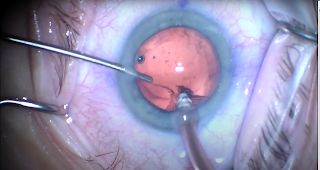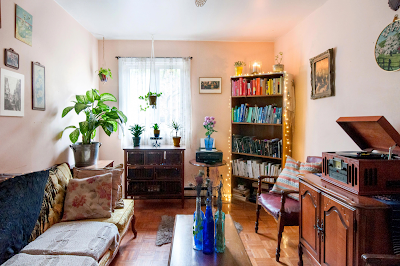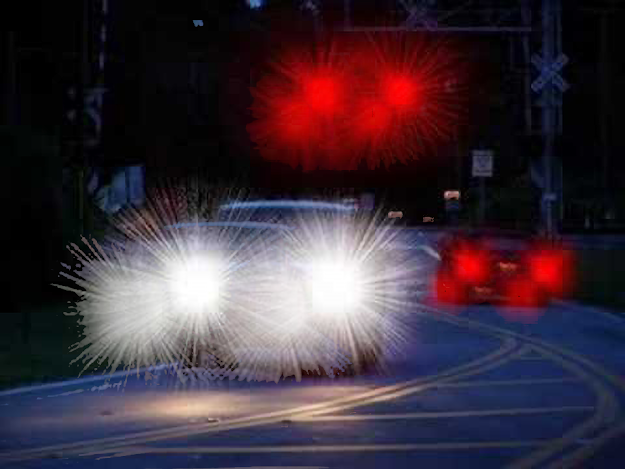Introduction
This blog will document as much as possible about my journey through the various stages of cataract (intraocular lens (IOL) replacement) surgery and recovery. I plan to document the diagnosis, testing, surgery, post-surgery and subsequent adjustment/neural-adaptation processes. I plan to document what it was like before I had the surgery, immediately afterwards and then also document the changes I notice at various times after the surgery so it will be possible for anyone who is contemplating undergoing IOL replacement surgery to see what they might expect to happen with their surgery.
I'm drawing inspiration from the excellent blog done by Alek Komarnitsky documenting his journey with cataract surgery and the Crystalens IOL which can be viewed at
http://www.komar.org/faq/colorado-cataract-surgery-crystalens/ and the excellent YouTube video blog series put together by Kurt V. documenting his experience with the Physiol FineVision Tri-focal IOL. In North America, that lens is marketed through Bausch and Lomb. A link to Kurt's first video in his extensive series is
here.
If there's enough interest in this site, I'm also hoping that in time it may become a site where others can also blog/share information about their experiences with IOL replacement surgery so it will become a repository of people's shared experiences with the life-changing procedure. I will need some people to volunteer to help me with the programming in order to do that though. I can do some very basic website programming but something that sophisticated is definitely way out of my wheelhouse.
Who am I?
My name is Roger and I am a 58 (well, nearly 59) year old man who resides in Calgary, Alberta, Canada. Throughout most of my life I was blessed with excellent eyesight. I was the only one in my family who didn't have to wear glasses. My father had to wear glasses ever since he was a young child and I think my Mom did too. She had a weak (I think 20/70 or 20/80) left eye with bad astigmatism and both my older brothers had the same thing. Even my adopted sister had to wear glasses from childhood but that's neither here nor there since she isn't genetically related to us. For some reason though, I ended up with excellent eyesight in both eyes and never needed to wear glasses for anything. I don't know what my vision was back when I was young because I don't remember ever being tested. My eyes were good, I could see well so what's the point of getting a test done? Right? That's the way I always looked at it anyways. So if I had 20/15, 20/20 or 20/whatever vision in the past I'll never know. All I can say is that my vision was very good and I seemed to have no astigmatism, myopia or hyperopia.
Well, sometime in my 40s, things started to change. Presbyopia. That thing that happens to everyone's eyes where the lenses in their eyeballs become more rigid/less flexible and we start to lose our ability to focus on close-up things. I found that it was especially difficult to see things close-up or read fine print if the light wasn't perfect. That's when I started relying upon magnifiers/reading glasses for anything close-up. Distance vision was still quite good but the intermediate vision also started to become a bit of a problem. Ordinary drugstore magnifiers/readers don't seem to work well in that range so I struggled through with that part of my vision. That was problematic as I spend a lot of time on the computer for my work and also for personal interest and entertainment.
When did the Cataracts First Appear?
To be honest, I'm not really sure. I think a couple years ago maybe. I am a (North American) football season ticket holder and for all last season and maybe the season before, I had to use binoculars to watch the games where I could always see the plays and read the numbers and names on the players' jerseys without them before.
As far as all the other things like the multiple images, halos and starbursts around lit objects, I'm not really sure when they started to happen. I guess I'm so out of touch with things that happen with my body that I never really noticed that it was happening until all-of-a-sudden I did notice and these effects were already very prevalent.
The truth is, I didn't know what the symptoms of cataracts were. I thought that cataracts only made your vision hazy/foggy because your lenses get milky. I figured that what I had was just more advanced presbyopia. What I did know was that our health care system will not pay for any surgery to correct presbyopia because presbyopia is viewed as a natural part of aging like getting wrinkles and grey hair. I also knew I didn't have the money to pay for the surgery myself so I didn't even bother to see what treatment options there were for it.
The Awakening
I'm not sure if I knew or if one day I just heard that at least basic cataract surgery is covered under our healthcare system and then suddenly the idea just popped into my head to actually find out what the symptoms of cataracts were vs presbyopia. One two-second Google search later, I had the information at my fingertips and all-of-a-sudden I knew (or at least I was pretty sure) I had cataracts.
I made an appointment to have my eyes tested by an optometrist and he didn't get very far into his testing before he just gave up and said, "I'm going to refer you to an Opthamologist for your cataracts. Come back and see me after you've had your eyes fixed." That was earlier in 2020. I was 58 and as far as I can remember, it was the first time in my life I had my eyes checked by an optometrist. If they were ever checked before it was probably as a little kid standing in the hallway of a GP's office reading a standard eye chart at the end of the hall. If you could read one of the lower lines on the chart you were good to go and no further testing was needed. I certainly know I never had an eye test done during my teenage or later years until I finally went in to be checked at the age of 58.
To be told I had cataracts was actually good news because it meant I could get the eye exams and surgery completely paid for through our government healthcare plan if I just wanted to settle for straightforward mono-focal IOLs or I could get some of the eye exams and part of the surgery costs paid for if I wanted to upgrade to a premium multi-focal IOL.
I wish I would have figured this all out a couple of years ago. Living with the bad eyesight I've had for the last year or more has not been easy. Among other things, it has caused or contributed to some physical problems I'm having with my back from having to lean in so close to the computer screen so I can see the text clear enough to read. I've been raising the font size on the screen to try and compensate but even with the font size increased quite a bit I still have to lean in close to see it clearly.
What is my Eyesight Like Right Now (Pre-surgery)?
Right now my eyesight is pretty bad. I see multiple overlapping and slightly offset images even with one eye closed. None of the images are all that clear either. Photography is one of my hobbies so I'm pretty good with Photoshop. This gives me the ability to create images that will give you a good idea of what I see when I look at things. Here's an example of what I mean. Not to long ago I was walking my dog down by the Bow River which I live close to. A bald eagle was flying down the river maybe 150 - 200 yards away from me. The sky was light overcast so the contrast between the darkly feathered bird and the uniform light grey sky was pretty high.
This is what someone with "normal" eyes would have seen:
This is what I saw with my Cat-o-vision. I knew it was just one bird as the wings on all three images flapped in complete unison.
But for all the problems I have with daytime vision, night vision is FAR WORSE. The other day I was sitting in an outdoor hot tub looking up at a full moon shining brightly in a clear dark sky. If I covered my left eye and looked just through my right, I could count at least 8 overlapped and offset images of the moon. A few of these images were brighter but many were dim ghost images. When I covered my right eye and looked just through my left I could count at least 5 images. With both eyes open I could count at least 13 overlapped and offset images of the moon but there may have been more.
This is what a person with normal vision would've seen:
This is a representation of what I saw with my Cat-o-vision. The image I've constructed here shows 12 overlapped and offset moon images and gives you a very good idea of what it's like to look at a full moon with my cataract impaired eyes.
Night Driving
Driving at night is really tough so I try to avoid it as much as I can. When I do it, I really have to concentrate on what I'm doing. As I'm writing this, I'm just one day away from having my first eye surgery done so hopefully, my problems with night vision and night driving are nearly at an end.
To describe what I see while night driving is a bit difficult because there is so much to say. I see multiple images of tail, traffic and headlights. I see large dense halos around red traffic and tail lights. The halos around green lights are there too but they're darker and not so dense. I see a lot of starbursting around on-coming headlights.
This picture sort of tells the story but not exactly.
The differences between what is shown in this image and what I actually see are as follows:
Headlights: I see less numbers of starburst rays than are shown in this image but the rays I see are much longer. Instead of dozens of spiky starburst rays coming from the each headlight, I see maybe 5 - 10 but they are much longer. They would come all of the way from the car to or past me.
Traffic and Brake Lights: The halos I see around the red lights are about as large as shown in the image but they are less spiky/starbursty and more like dense round disks of red light surrounding a brighter red light in the center of the halos.
Despite the differences between what I actually see and what I've shown in the above image I've conjured, it still should give you a pretty good idea about what driving at night with cataracts is like. Now try to imagine what it looks like with a stream of several sets of brake lights up ahead at the stoplight and a stream of several cars with headlights on coming at you the other way. It's messed up!
 The whole procedure only lasted a few minutes. I chatted with Doctor Mitchell all the way through it asking what he was doing at the moment and finding out a little about the history of cataract surgery. Doctor Mitchell, has been doing cataracts and other eye surgeries since 1980. Talk about experience! I consider myself lucky to have had one of the most preeminent, reputable and experienced eye surgeons in the city of Calgary and I daresay, all of Canada. Dr. Mitchell had no idea how many cataract surgeries he had done in his career (it has to be several if not into the tens of thousands) but during our conversation, Dr. Mitchell did say that he had installed at least 3,000 of the Lentis MPlus IOLs which I was getting and had almost zero complaints of unacceptable results with those lenses. I will be blogging about those lenses and why I chose to go with them over the other types that were available to me in a later post.
The whole procedure only lasted a few minutes. I chatted with Doctor Mitchell all the way through it asking what he was doing at the moment and finding out a little about the history of cataract surgery. Doctor Mitchell, has been doing cataracts and other eye surgeries since 1980. Talk about experience! I consider myself lucky to have had one of the most preeminent, reputable and experienced eye surgeons in the city of Calgary and I daresay, all of Canada. Dr. Mitchell had no idea how many cataract surgeries he had done in his career (it has to be several if not into the tens of thousands) but during our conversation, Dr. Mitchell did say that he had installed at least 3,000 of the Lentis MPlus IOLs which I was getting and had almost zero complaints of unacceptable results with those lenses. I will be blogging about those lenses and why I chose to go with them over the other types that were available to me in a later post.












